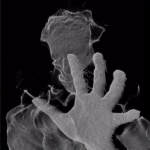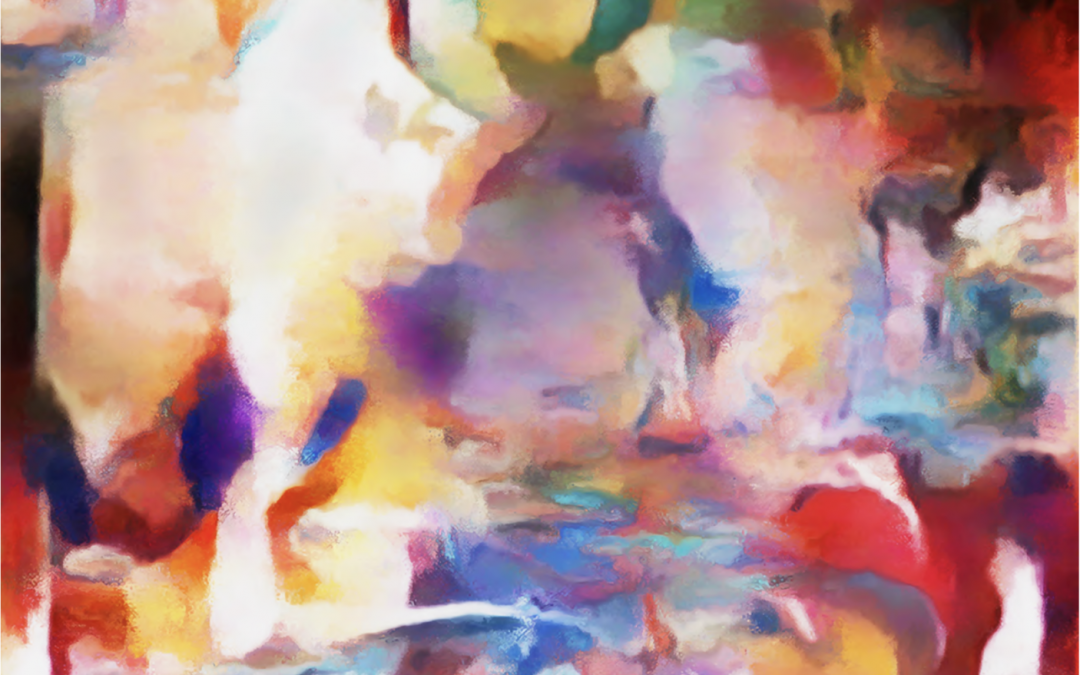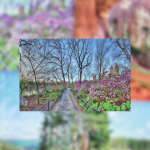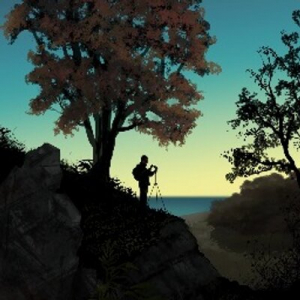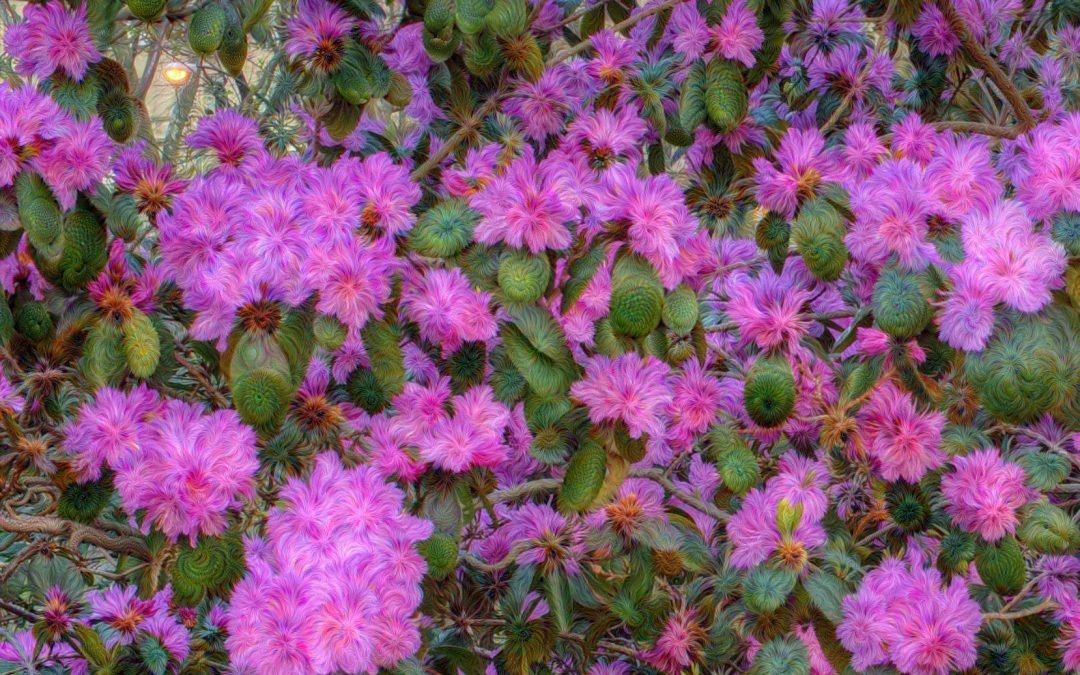The artist discusses her collaboration with NARS Cosmetics and the power of beauty and identity.

The Lost Robbies
This is the story of The Lost Robbies.
On July 17, 2018, Christies held their first ever annual Tech Summit in London. SuperRare had just launched a few months prior and the team was stoked to have the chance to attend and network with titans of the traditional art industry. At the time, the digital art world as we know it was still emerging and largely unknown, especially digital art tokenized on the blockchain.
SuperRare was invited to add to the gift bags of the 300+ attendees, and wanting to do something cool and unique decided to partner with Jason Bailey and enlist Robbie Barrat, the first artist to ever tokenize on SuperRare, to create an artwork with 300 individual frames that could each be tokenized and given away to the attendees.
Robbie created AI Generated Nude Portrait #7 for the event, which he intended as 300 separate frames of a single artwork. Each of the 300 frames was tokenized separately and added to redeemable ETH gift cards with directions for how to claim the 1/1 token on SuperRare. The team put the cards into the gift bags and explained the story around them to as many people as possible, but the concept of cryptoart was still so early, weird and new to the folks in the room that many of the attendees had no idea how special the gift would end up being down the line. They literally had nuggets of digital gold in their gift bags, but trying to explain cryptoart and Ethereum to the traditional art world in 2018 was like trying to explain Netflix to Blockbuster in 1998.
A little more than 3 months after the event, Robbie (who was only 18 at the time) made worldwide art news when the code he created was used by French artist trio Obvious to create Portrait of Edmond Belamy, which went on to sell for $432,500 as the first ever AI generated artwork sold at a Christie’s auction with no credit to Robbie at the time.
Debate about the sale ensued amongst the AI art community, with opinions on both sides, and even though Robbie received no proceeds from that Christie’s sale there’s no doubt the story significantly elevated his name in the art world.
I decided to look through all of the 300 tokens that were given away that day to get a better idea of how many actually still exist. I was very surprised to find that more than two years later only 12 of the 300 tokens were ever claimed, making it HIGHLY likely the other 288 tokens are now lost forever, AKA – The Lost Robbies.
One of the most recent secondary market sales for one of these twelve remaining tokens was for 16.5 ETH ($2,172), when Coldie purchased Frame #153 about 5 months ago from the XERO Gallery. Hindsight is always 20/20, but I’d say this was quite the missed opportunity for those 288 traditional art world attendees that didn’t see the vision for cryptoart at the time and never took 5 minutes to redeem their free Robbie Barrat artwork.
A quick glance at Robbie’s SuperRare profile shows a total supply of 314 artworks, but taking into account the 288 Lost Robbies, his actual existing supply of tokenized art is extremely low at only 26 tokens (14 single edition works + the 12 single edition frames of AI Generated Nude Portrait #7 that were claimed after the Christies Tech Summit). Robbie also still holds the record for the largest ever sale on SuperRare, when his first ever tokenized work AI Generated Nude Portrait #1 sold from first collector Jason Bailey to 2nd collector curiousnfts for 75 ETH ($13,265).
I’ve been a huge fan of Robbie Barrat since the first time I laid eyes on his work almost 2 years ago, and I truly believe his tokenized works will have real value in the future. The story of The Lost Robbies and the lack of interest from the traditional art world at the 2018 Christies Tech Summit could very well end up going down in the history books as one of the biggest missed opportunities in art history.
Here’s a full look at the 12 existing frames of AI Generated Nude Portrait #7 with quotes from some of the owners:
“I have a provocative question, if Robbie Barrat had stayed with us during these two years of cryptoart, what would cryptoart be today? Come back mate, and play your game.” – Hackatao
Hack Collection – Frame 24
“I’m very lucky to have been able to acquire Frame 53 through a trade about a year ago and it will always be one of the most prized in my collection. The story behind these works and the lack of interest from the traditional art world in 2018 is and will always be one of the most interesting stories in cryptoart ” – Roses
Roses – Frame 53
x_melanie – Frame 65
“Collecting a Robbie Barrat feels like being one of the lucky custodians of something mysteriously precious that only in the future we will know the exact importance in the history of art” – TokenAngels
TokenAngels – Frame 101
“Looking back on 2018 it is striking how big the gap was between the awareness of planting a seed (phrase) and cultivating a seed (phrase). Looking further back on history it reflects the same lack of preparedness when the disruptive hits the scene: Move along, nothing to see here.” – Zaphodok
Zaphodok – Frame 104 & 106
michaeldada – Frame 131
“It’s hard to summarize everything I like about Robbie Barrat in a short quote because there’s so many great things to mention about him. I have great admiration for his creative vision as an artist, his original process and ingenuity as a young AI pioneer. I also admire his unique taste as a curator and the integrity he has as a person. If I could only pick two things it would be these: Firstly, his ability to show what AI can do as a creative tool that can liberate other artists/designers from the chain of traditional methods. Secondly, his ultimate decision to become an artist.” – curiosnfts
curiousnfts – Frame 149
Robbie is a special kind of artist. I have an appreciation that he is multi-disciplinary GAN artist using technology to create not only artwork, but also in fashion. The most important artworks of a movement sometimes happen when no one is expecting them.” – Coldie
Coldie – Frame 153
“The Nude Portrait frames are not only a piece of art history but also they embody the essense of something that is super rare. Robbie’s internship with NVIDIA gave him access to computing power far beyond that of the average AI artist. Not only is it near-impossible to recreate an AI artwork due to the nature of the algorithm employed, but the hours of training on powerful GPUs make for a truly unique artwork that would none could truly replicate.” – lordcharles
lordcharles – Frame 165
“Probably the artist that cares less of the NFTs craziness and one of the few that really created something valuable. YES AI GAN!” – Billy Whistler
billywhistler – Frame 175
candytree – Frame 179
Tech






Code as canvas: how Olta and Transient Labs are ushering in a new genre of coding as art
Harmon Leon interviews the minds behind Olta and Transient Labs to discuss code, metadata, and the future of interactive NFTs.
Curators' Choice






Curated Conversations: Ayla El Moussa
SuperRare Labs Curatorial Editor Linda Dounia Rebeiz interviews Ayla El Moussa about how she draws inspiration from the Renaissance period, how she approaches nude portraiture, and her “Painted Muse” Series on SuperRare.

















